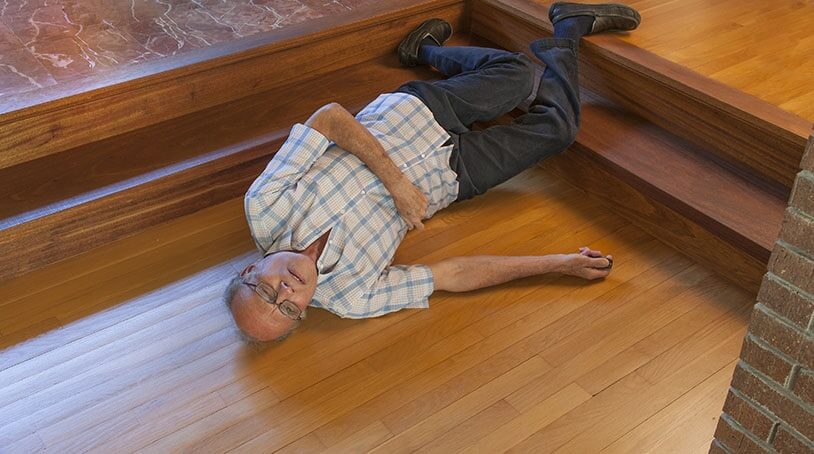In today’s rapidly advancing world, technology plays a vital role in enhancing our lives, especially for our elderly loved ones. With increasing concerns about the safety of seniors, especially those living independently, fall detection devices have emerged as a promising solution. But the question remains: do fall detection devices really work? This article delves into this question, exploring the efficacy and reliability of these devices.

Understanding Fall Detection Devices
Fall detection devices are technological tools designed to identify falls and alert caregivers or emergency services promptly. These devices often employ smart sensors and algorithms to detect unusual movements or sudden changes in position. For caregivers, these devices offer peace of mind, knowing they can be alerted immediately if a fall occurs.
Types of Fall Detection Devices
Wearable Devices
These are typically worn as pendants or wristbands. They use accelerometers to detect sudden movements indicative of a fall. Some popular models include those that are integrated into smartwatches.
Non-Wearable Devices
These devices are installed in living spaces and use radar or infrared sensors to detect falls. They are beneficial for those who may not want to wear a device constantly.
How Do These Devices Work?
Most fall detection devices operate using a combination of sensors and algorithms. The sensors detect motion and changes in position, while the algorithms analyze these data points to determine if a fall has occurred. When a fall is detected, the device sends an alert to pre-designated contacts or emergency services.
Accuracy and Reliability
The success of a fall detection device largely depends on its accuracy in detecting true falls while minimizing false alarms. Many modern devices boast high accuracy rates, though no device is infallible. Continuous advancements in technology are improving these rates steadily.
The Role of Technology in Enhancing Safety
Beyond just fall detection, technology plays a broader role in enhancing the safety and well-being of the elderly. Devices like IoT sensors and smart home systems contribute significantly to creating safer living environments. IoT sensors are particularly useful in monitoring daily activities and ensuring everything is functioning as it should.
Challenges and Limitations
Despite their benefits, fall detection devices are not without challenges. They can sometimes trigger false alarms, leading to unnecessary panic. Additionally, some seniors may be reluctant to wear devices, viewing them as intrusive. It’s crucial to address these concerns to improve the adoption and efficacy of these devices.
Real-Life Success Stories
Many families have shared positive experiences with fall detection devices, citing instances where timely alerts enabled quick medical intervention, preventing further complications. These stories underscore the potential life-saving impact of these devices.
Choosing the Right Device
When selecting a fall detection device, consider factors such as ease of use, comfort, accuracy, and the ability to integrate with other safety systems. Consulting with healthcare professionals can also provide valuable insights.
The Future of Fall Detection Technology
The future of fall detection looks promising, with ongoing innovations aiming to enhance accuracy and user experience. Technologies such as AI and machine learning are expected to play a pivotal role in this evolution, making devices smarter and more intuitive.
Integrating Fall Detection with Other Safety Solutions
Combining fall detection with other smart elderly care solutions can significantly enhance safety. For example, integrating with systems that link directly to emergency contacts ensures a comprehensive safety net. Learn more about these integrations at Emergency Contacts.
Cost and Accessibility
The cost of fall detection devices varies, with options available for different budgets. While some devices may seem expensive, the peace of mind and safety they offer can outweigh the cost. Additionally, some insurance plans may cover these devices, making them more accessible.
The Importance of Regular Monitoring and Updates
To ensure optimal functionality, it’s essential to regularly monitor and update fall detection devices. This ensures they remain accurate and reliable, providing the best possible protection for users.
Conclusion
In conclusion, while no device is perfect, fall detection devices offer a valuable layer of protection for the elderly. As technology continues to advance, these devices are likely to become even more effective and user-friendly. Family caregivers can find comfort in knowing that these tools exist to support their loved ones’ safety.

FAQ: Common Questions About Fall Detection Devices
Are fall detection devices suitable for all seniors?
Yes, they can be beneficial for any senior, especially those living alone or at risk of falls.
How do I know if a device is working correctly?
Regularly test the device’s functionality and ensure it is updated to the latest software version.
Can fall detection devices work without Wi-Fi?
Some devices do require Wi-Fi or cellular data, while others can function independently. It’s essential to check the specifications when choosing a device.
For more information on fall prevention, external resources can provide additional insights and guidance.
This article contains affiliate links. We may earn a commission at no extra cost to you.






